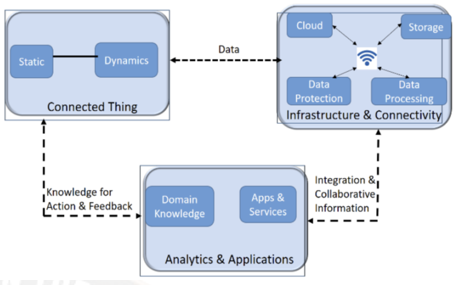Securing IoT Networks for Detection of Cyber Attacks using Automated Machine Learning
Main Article Content
Abstract
Cybercriminals are always developing innovative strategies to confound and frustrate their victims. Therefore, maintaining constant vigilance is essential if one wishes to protect the availability, confidentiality, and integrity of digital systems. Machine learning (ML) is becoming an increasingly powerful technique for doing intelligent cyber analysis, which enables proactive defenses. Machine learning (ML) has the potential to thwart future assaults by studying the recurring patterns that have already been successful. Nevertheless, there are two significant drawbacks associated with the utilization of ML in security analysis. To begin, the most advanced machine learning systems have significant problems with their computing overheads. Because of this constraint, firms are unable to completely embrace ML-based cyber strategies. Second, in order for security analysts to make advantage of ML for a wide variety of applications, they will need to develop specialized frameworks. In this study, we aim to put a numerical value on the degree to which a hub can improve the safety of an ecosystem. Typical cyberattacks were carried out on an Internet of Things (IoT) network located within a smart house in order to validate the hub. Further investigation of the intrusion detection system's (IDS) resistance to adversarial machine learning (AML) assaults was carried out. In this method, models can be attacked by supplying adversarial samples that attempt to take advantage of the defects in the detector that are present in the pre-trained model.
Article Details
References
S. Kumar, M. K. Chaube and S. Kumar, "Secure and Sustainable Framework for Cattle Recognition Using Wireless Multimedia Networks and Machine Learning Techniques," in IEEE Transactions on Sustainable Computing, vol. 7, no. 3, pp. 696-708, 1 July-Sept. 2022, doi: 10.1109/TSUSC.2021.3123496.
P. Kumar et al., "PPSF: A Privacy-Preserving and Secure Framework Using Blockchain-Based Machine-Learning for IoT-Driven Smart Cities," in IEEE Transactions on Network Science and Engineering, vol. 8, no. 3, pp. 2326-2341, 1 July-Sept. 2021, doi: 10.1109/TNSE.2021.3089435.
S. Y?lmaz, E. Aydogan and S. Sen, "A Transfer Learning Approach for Securing Resource-Constrained IoT Devices," in IEEE Transactions on Information Forensics and Security, vol. 16, pp. 4405-4418, 2021, doi: 10.1109/TIFS.2021.3096029.
N. Chawla, A. Singh, H. Kumar, M. Kar and S. Mukhopadhyay, "Securing IoT Devices Using Dynamic Power Management: Machine Learning Approach," in IEEE Internet of Things Journal, vol. 8, no. 22, pp. 16379-16394, 15 Nov.15, 2021, doi: 10.1109/JIOT.2020.3021594.
D. H. Hagos, A. Yazidi, Ø. Kure and P. E. Engelstad, "A Machine-Learning-Based Tool for Passive OS Fingerprinting With TCP Variant as a Novel Feature," in IEEE Internet of Things Journal, vol. 8, no. 5, pp. 3534-3553, 1 March1, 2021, doi: 10.1109/JIOT.2020.3024293.
M. A. Al-Garadi, A. Mohamed, A. K. Al-Ali, X. Du, I. Ali and M. Guizani, "A Survey of Machine and Deep Learning Methods for Internet of Things (IoT) Security," in IEEE Communications Surveys & Tutorials, vol. 22, no. 3, pp. 1646-1685, thirdquarter 2020, doi: 10.1109/COMST.2020.2988293.
S. Zafar et al., "A Systematic Review of Bio-Cyber Interface Technologies and Security Issues for Internet of Bio-Nano Things," in IEEE Access, vol. 9, pp. 93529-93566, 2021, doi: 10.1109/ACCESS.2021.3093442.
W. Y. B. Lim et al., "Hierarchical Incentive Mechanism Design for Federated Machine Learning in Mobile Networks," in IEEE Internet of Things Journal, vol. 7, no. 10, pp. 9575-9588, Oct. 2020, doi: 10.1109/JIOT.2020.2985694.
M. U. Aftab et al., "A Hybrid Access Control Model With Dynamic COI for Secure Localization of Satellite and IoT-Based Vehicles," in IEEE Access, vol. 8, pp. 24196-24208, 2020, doi: 10.1109/ACCESS.2020.2969715.
O. Mendsaikhan, H. Hasegawa, Y. Yamaguchi and H. Shimada, "Quantifying the Significance and Relevance of Cyber-Security Text Through Textual Similarity and Cyber-Security Knowledge Graph," in IEEE Access, vol. 8, pp. 177041-177052, 2020, doi: 10.1109/ACCESS.2020.3027321.
N. M. Karie, N. M. Sahri, W. Yang, C. Valli and V. R. Kebande, "A Review of Security Standards and Frameworks for IoT-Based Smart Environments," in IEEE Access, vol. 9, pp. 121975-121995, 2021, doi: 10.1109/ACCESS.2021.3109886.
M. Saharkhizan, A. Azmoodeh, A. Dehghantanha, K. -K. R. Choo and R. M. Parizi, "An Ensemble of Deep Recurrent Neural Networks for Detecting IoT Cyber Attacks Using Network Traffic," in IEEE Internet of Things Journal, vol. 7, no. 9, pp. 8852-8859, Sept. 2020, doi: 10.1109/JIOT.2020.2996425.
A. Kova?evi?, N. Putnik and O. Toškovi?, "Factors Related to Cyber Security Behavior," in IEEE Access, vol. 8, pp. 125140-125148, 2020, doi: 10.1109/ACCESS.2020.3007867.
B. Chatterjee, D. Das, S. Maity and S. Sen, "RF-PUF: Enhancing IoT Security Through Authentication of Wireless Nodes Using In-Situ Machine Learning," in IEEE Internet of Things Journal, vol. 6, no. 1, pp. 388-398, Feb. 2019, doi: 10.1109/JIOT.2018.2849324.
M. H. Cintuglu, O. A. Mohammed, K. Akkaya and A. S. Uluagac, "A Survey on Smart Grid Cyber-Physical System Testbeds," in IEEE Communications Surveys & Tutorials, vol. 19, no. 1, pp. 446-464, Firstquarter 2017, doi: 10.1109/COMST.2016.2627399.
R. Kozik, M. Chora? and W. Ho?ubowicz, "Packets tokenization methods for web layer cyber security," in Logic Journal of the IGPL, vol. 25, no. 1, pp. 103-113, Feb. 2017, doi: 10.1093/jigpal/jzw044.

